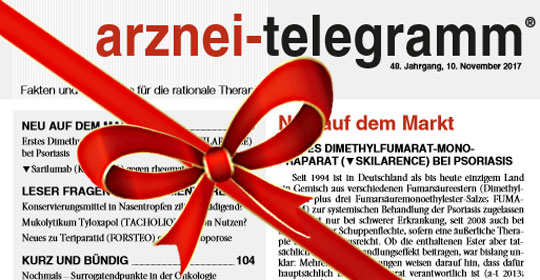CURRENT ADR NETWORK REPORT
Enhanced effect of coumarins caused by the cough medicine noscapine (CAPVAL)
An 81-year-old woman was admitted as an inpatient with acute respiratory distress syndrome and bleeding. Since the patient's INR was a dangerously high 7.9, there is the suspicion that the cough medicine noscapine (CAPVAL) which the anticoagulated patient was taking has inhibited the metabolism of phenprocoumon (MARCUMAR, generics) and may have led to an overdose of the coumarin (NETZWERK report 17.437). Noscapine (or narcotine) is a component of opium and is obtained from the milky juice of unripe opium poppy seed capsules (1). According to the Summary of Product Characteristics (SPC) for CAPVAL (2), noscapine inhibits the enzymes CYP2C9 and CYP2C19 in vivo and CYP3A4 in vitro. Since the coumarins phenprocoumon and warfarin (COUMADIN) are metabolised via CYP2C9 and CYP3A4, increased anticoagulation and an increased tendency to bleed has to be assumed and close monitoring of the INR is necessary due to the narrow therapeutic range (2-4). Enzyme inhibition by noscapine could also be relevant for other medicinal products with a narrow therapeutic range such as phenytoin (PHENHYDAN, generic) (3). It is to be feared that too often it is not paid enough attention to the interaction with coumarins, especially as the alkaloid from the papaverines has been the most commonly prescribed cough medicine in 2016 with 7.4 million daily doses (1). It is our opinion, however, that cough medicines such as noscapine often do not need to be prescribed for acute coughing, which is mostly viral and stops of its own accord (a-t 2015; 46: 107-8), moreover since there are also discussions about genotoxicity of noscapine (e.g. a-t 1991; No. 7: 61 or 1999; No. 2: 26). According to the World Health Organization (WHO), noscapine also attracted attention recently as the cause of a total of 130 adverse effects in the form of headaches, chest pain and abdominal pain, with several patients complaining of the severity of the pain in particular (5).
| 1 | LEMMER, B. in SCHWABE, U. et al. (Ed.): "Arzneiverordnungs-Report 2017" , Springer-Verlag Berlin 2017; pages 385-7 |
| 2 | Infectopharm: SPC CAPVAL, as at Jan. 2015 |
| 3 | ROSENBORG, S. et al.: Clin. Pharmacol. Ther. 2010; 88: 343-6 |
| 4 | Meda Pharma: SPC MARCUMAR, as at Febr. 2017 |
| 5 | EDERVEEN, E.: WHO Pharm. Newsl. 2017; No. 5: 15 |
© arznei-telegramm, Apr. 2018, protected by copyright laws.
Autor: Redaktion arznei-telegramm - Wer wir sind und wie wir arbeiten
Diese Publikation ist urheberrechtlich geschützt. Vervielfältigung sowie Einspeicherung und Verarbeitung in elektronischen Systemen ist nur mit Genehmigung des arznei-telegramm® gestattet.
